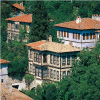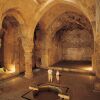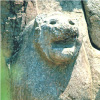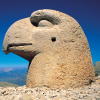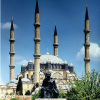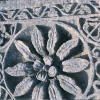Unesco World of Heritage List Heritage is our legacy from the past, what we live with today, and what we pass on to future generations. Our cultural and natural heritage are both irreplaceable sources of life and inspiration. What makes the concept of World Heritage exceptional is its universal application. World Heritage sites belong to all the peoples of the world, irrespective of the territory on which they are located. The United Nations Educational, Scientific and Cultural Organization (UNESCO) seeks to encourage the identification, protection and preservation of cultural and natural heritage around the world considered to be of outstanding value to humanity. This is embodied in an international treaty called the Convention concerning the Protection of the World Cultural and Natural Heritage , adopted by UNESCO in 1972.The World Heritage List includes 962 properties forming part of the cultural and natural heritage which the World Heritage Committee considers as having outstanding universal value. World Heritage List includes 745 cultural , 188 natural and 29 mixed properties in 157 States Parties. As of September 2012, 190 States Parties have ratified the World Heritage Convention. Turkey has 11 Heritages on the UNESCO World Heritage List as of 2012 .Archaeological Site of Troy (1998),City of Safranbolu (1994),Great Mosque and Hospital of Divriği (1985),Hattusha: the Hittite Capital (1986),Historic Areas of Istanbul (1985),Nemrut Dağ (1987),Neolithic Site ofÇatalhöyük (2012),Selimiye Mosque and its Social Complex (2011),Xanthos-Letoon (1988)
UNESCO Tentative List
BURDUR
Archaeological Site Of Sagalassos
Date of submission to the Tentative World Heritage List: 06/02/2022
List Reference: 5409
Criteria: Cultural
City in the Clouds
The archaeological site of Sagalassos is located in southwest Turkey, near the present town of Aglasun (Burdur province); roughly 110 km to the north of the well-known...
Archaeological Site of Troy
Little Brief About Troy
Troy, with its 4,000 years of history, is one of the most famous archaeological sites in the world. The first excavations at the site were undertaken by the famous archaeologist Heinrich Schliemann in 1870. In scientific terms, its extensive remains are the most significant demonstration of the first contact between the...
City of Safranbolu
Little Brief About Safranbolu
From the 13th century to the advent of the railway in the early 20th century, Safranbolu was an important caravan station on the main East–West trade route. The Old Mosque, Old Bath and Süleyman Pasha Medrese were built in 1322. During its apogee in the 17th century, Safranbolu's architecture influenced urban...
Great Mosque and Hospital of Divriği
Lİttle Brief About Great Mosque and Hospital of Divriği
This region of Anatolia was conquered by the Turks at the beginning of the 11th century. In 1228–29 Emir Ahmet Shah founded a mosque, with its adjoining hospital, at Divrigi. The mosque has a single prayer room and is crowned by two cupolas. The highly sophisticated technique of vault...
Hattusa The Capital City of Hittites
Little Brief About Hattusa
The archaeological site of Hattusha, former capital of the Hittite Empire, is notable for its urban organization, the types of construction that have been preserved (temples, royal residences, fortifications), the rich ornamentation of the Lions' Gate and the Royal Gate, and the ensemble of rock art at Yazilikaya. The...
Historic Areas of Istanbul
Little Brief About İstanbul
With its strategic location on the Bosphorus peninsula between the Balkans and Anatolia, the Black Sea and the Mediterranean, Istanbul has been associated with major political, religious and artistic events for more than 2,000 years. Its masterpieces include the ancient Hippodrome of Constantine, the 6th-century...
Nemrut Dağı
Little Brief About Nemrut
The mausoleum of Antiochus I (69–34 B.C.), who reigned over Commagene, a kingdom founded north of Syria and the Euphrates after the breakup of Alexander's empire, is one of the most ambitious constructions of the Hellenistic period. The syncretism of its pantheon, and the lineage of its kings, which can be traced...
Neolithic Site of Çatalhöyük
Little Brief About Çatalhöyük
Two hills form the 37 ha site on the Southern Anatolian Plateau. The taller eastern mound contains eighteen levels of Neolithic occupation between 7400 bc and 6200 bc, including wall paintings, reliefs, sculptures and other symbolic and artistic features. Together they testify to the evolution of social...
Selimiye Mosque and it's Social Complex
Little Brief About Selimiye Mosque
The square Mosque with its single great dome and four slender minarets, dominates the skyline of the former Ottoman capital of Edirne. Sinan, the most famous of Ottoman architects in the 16th century, considered the complex, which includes madrasas (Islamic schools), a covered market, clock house, outer...
Xantos - Lethoon
Little Brief About Xanthos- Lethoon
This site, which was the capital of Lycia, illustrates the blending of Lycian traditions and Hellenic influence, especially in its funerary art. The epigraphic inscriptions are crucial for our understanding of the history of the Lycian people and their Indo-European language.
History of Xantos -...
Göreme National Park and the Rock Site of Cappadocia
In a spectacular landscape, entirely sculpted by erosion, the Göreme valley and its surroundings contain rock-hewn sanctuaries that provide unique evidence of Byzantine art in the post-Iconoclastic period. Dwellings, troglodyte villages and underground towns – the remains of a traditional human habitat dating back to the 4th century – can...
Hierapolis - Pamukkale
Little Brief About Hierapolis
Deriving from springs in a cliff almost 200 m high overlooking the plain, calcite-laden waters have created at Pamukkale (Cotton Palace) an unreal landscape, made up of mineral forests, petrified waterfalls and a series of terraced basins. At the end of the 2nd century B.C. the dynasty of the Attalids, the kings of...
